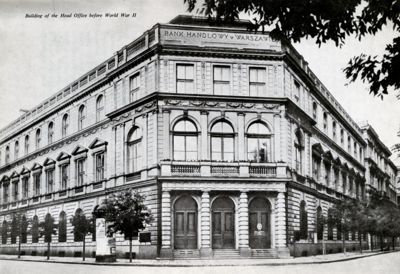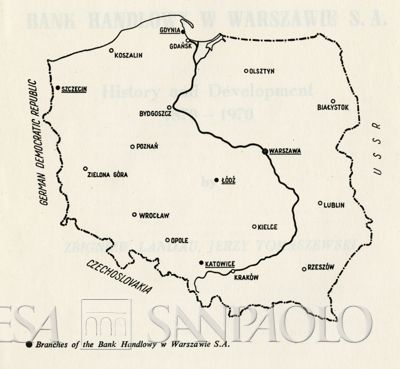| description |
Bank Handlowy w Warszawie was founded in 1870 by a group of Polish businessmen and financiers (including Henryk Toeplitz, a relative of Joseph Toeplitz, who would later become Banca Commerciale Italiana (BCI)'s Managing Director) led by Leopold Kronenberg.
The bank grew rapidly, operating in Tsarist Russia as well as later lending its support to Poland's first mining and metallurgical companies in the areas occupied by Russia. Poland's largest bank at the time, Bank Handlowy w Warszawie would maintain its leadership position even after the country regained its independence in 1918. However, it was negatively impacted by Poland's economic and political instability; in 1925, following the crises that ensued from the devaluation of the złoty, the bank had to be rescued through an international joint venture including BCI, which helped out with a two million dollar loan.
An agreement signed on 31 March 1927 led both to Bank Handlowy's merger with Banque des Payes Polonais Réunis (in which BCI held a stake) and the formation of a voting trust controlled by foreign shareholders including BCI. Joseph Toeplitz and Adolfo Rossi sat on Bank Handlowy w Warzsawie's Board of Directors as BCI's representatives.
The difficult situation in which BCI, Bank Handlowy's top lender, found itself in from 1931 to 1935 threw the bank into a fresh crisis. In January 1935, Raffaele Mattioli signed a "gentlemen's agreement" with the Polish government to resolve Italy's financial interests in the country. Poland's Treasury subsquently took over Bank Handlowy's debt to BCI, in turn giving the Italian bank forty million lire's worth of five-year Polish treasury bonds. |
| BIBLIOGRAPHY |
ASI-BCI, UF, Complimentary notes to accountancy datas, vol. 10, ff. 2890-2893
ASI-BCI, VCA; June 1, 1927; vol. 9, pp. 203-204
ASI-BCI, VCA; October 26, 1929; December 23, 1929; September 29, 1930; vol. 11, pp. 65, 136-137, 296
ASI-BCI, SOF, cart. 416 |


